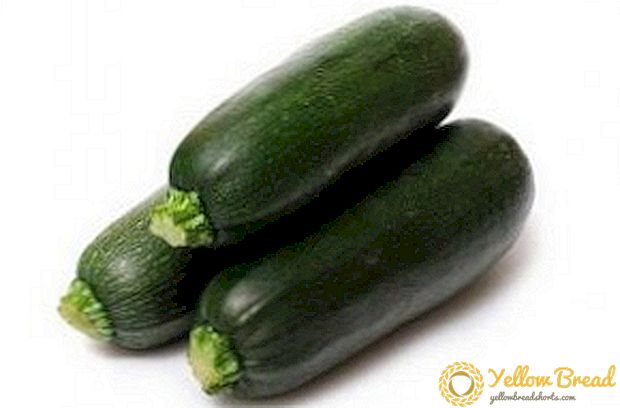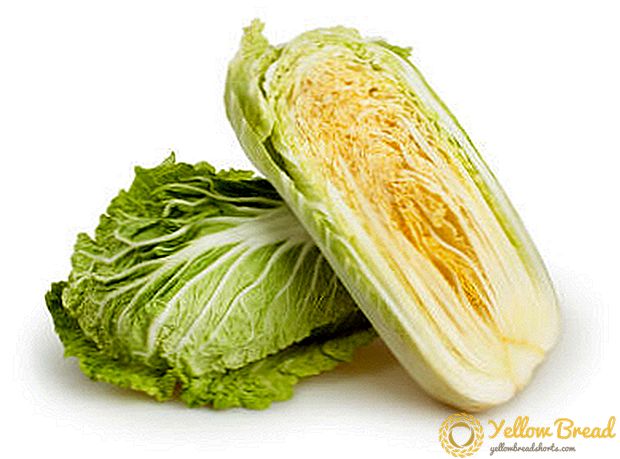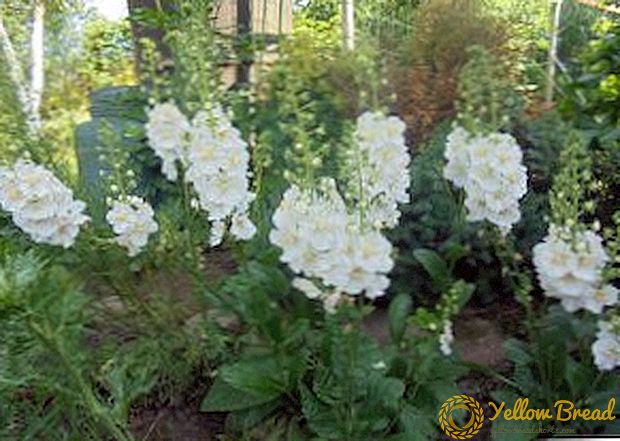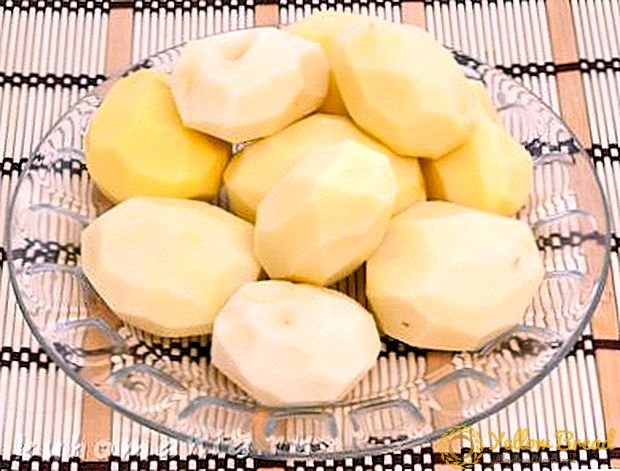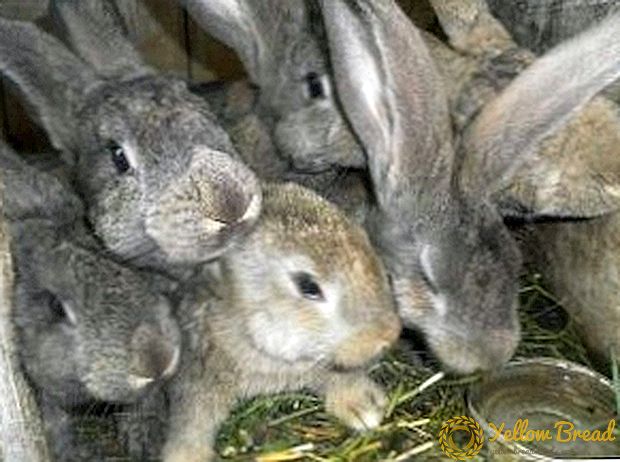 Rabbit breeding is an old and well developed branch of agriculture. Currently, there are about ninety original breeds, which experts divide into "meat" and "fur" breeds. The latter, in turn, unite the short-haired and normal-haired group.
Rabbit breeding is an old and well developed branch of agriculture. Currently, there are about ninety original breeds, which experts divide into "meat" and "fur" breeds. The latter, in turn, unite the short-haired and normal-haired group.
In our country, the last group is most often bred, the brightest representative of which is the gray giant rabbits. Why this breed is so popular try to understand the pages of this publication.
This publication is devoted to the gray giant rabbit breed, because it is the most common breed in our country, which is actively used for industrial production and private business.
What are the main advantages and disadvantages of the breed? What are the prospects for the development of this branch of rabbit breeding? What are the features of breeding and care for such animals? These and other questions you can find the answer in this article.
- Description
- Appearance
- Productivity
- Features breeding, care
- Merits
- disadvantages
- Feeding features
- Okrol
Description
 This breed was bred by Ukrainian specialists in Poltava in 1952.Breeders crossed the usual local rabbits with representatives of the breed flandr. As a result, we received quite large local animals weighing up to 4, 5 kg and a chest girth of at least 37 cm (maximum 39 cm). They are not shorter than 56 cm and not longer than 66 cm.
This breed was bred by Ukrainian specialists in Poltava in 1952.Breeders crossed the usual local rabbits with representatives of the breed flandr. As a result, we received quite large local animals weighing up to 4, 5 kg and a chest girth of at least 37 cm (maximum 39 cm). They are not shorter than 56 cm and not longer than 66 cm.
Since the breed is relatively new, the color palette of animals is not constant, mainly it is gray, but there are also pure black and white individuals, which according to the other characteristics belong to the gray giant breed.
Appearance
 Color thoroughbred rabbits may be different. "Agouti" called rabbits with gray hare color. They have a white belly and legs, and the body is reddish-gray. The color of the coat is zonal, the guard hair is dark above, white below, and yellowish in the middle. The undercoat color is also unequal, most often at the root it is light blue, the top is dark, and the middle is yellow.
Color thoroughbred rabbits may be different. "Agouti" called rabbits with gray hare color. They have a white belly and legs, and the body is reddish-gray. The color of the coat is zonal, the guard hair is dark above, white below, and yellowish in the middle. The undercoat color is also unequal, most often at the root it is light blue, the top is dark, and the middle is yellow.
In a separate group, individuals with a dark gray color, like those of a kangaroo, are distinguished; their bodies are darker with a brownish tint, and the belly and bottom of the tail are smoky gray. Pods are predominantly blue along the entire length or slightly brighter at the root.
Animal breeders mark animals with a ferrous-gray color, their guard hairs are gray-brown in color, they are scattered throughout the body and look like gray hair.This original dark color with "gray" is not as common.
Such rabbits have a strong constitution, as well as long, thick ears that form the Latin letter V.
Productivity
Purebred females are very prolific, they are good mothers and great dairy nurse. In litters no more than 12 cubs, as a rule, rabbit bring healthy, rapidly growing offspring.
Two-month-old rabbits often weigh 1.7 kg., And three-month-old rabbits already weigh 2 kg. In the 4th month, they are rarely lighter than three kg. An adult weighs at least 6 kg. Seven-month pets are ready to breed.
The slaughter result of the breed is 60-61%, with the weight of the carcass on average not less than 3 kg, and the maximum area of the skin reaches 3000 cm square (an average of 2500 -2700 cm square).
The breed belongs to the meat-whisking class, because it is bred for fur and dietary meat. The cost of the skins is somewhat lower than usual, because the density of the fur is not uniform.
Features breeding, care
 Such rabbits are often kept at home, but not in the apartment, but in the country estates, in the household plots in large spacious enclosures. They are very beautiful, friendly and loving. Therefore, many people prefer to keep them as pets. Alert attitude towards small children is their only drawback.
Such rabbits are often kept at home, but not in the apartment, but in the country estates, in the household plots in large spacious enclosures. They are very beautiful, friendly and loving. Therefore, many people prefer to keep them as pets. Alert attitude towards small children is their only drawback.
In order for the breeding of rabbits of this breed to be as productive as possible, it is important to adhere to the basic sanitary and hygienic requirements for their maintenance:
- cell cleaning should be regular (this is necessary in order to exclude the appearance of all kinds of parasites);
- disinfection of cells and premises should be carried out at least 2 times a year.
The simplest and cheapest methods of disinfection, common in our country, are whitewashing walls with a composition of hydrated lime, as well as treatment with a 10% chlorinated solution. Additional disinfection is carried out before the settlement of new individuals or in the event that infectious diseases occur among the population.
It is important that in the room where the rabbits are kept there are no drafts.
Merits
This breed has unique features, the main ones are:
- high fecundity of individuals (in litter, on average, 7-8 cubs, the maximum number can reach 9-12);
- good milkiness of females;
- little rabbits caring mothers (in most cases, they carefully care for babies);
- such animals are unpretentious in care, they consistently give healthy offspring even at a temperature of -30 ° C frost;
- animals are unpretentious to food, they grow up healthy and strong, and also perfectly breed at any scheme of food and at any diet;
- rabbits are not inferior to meat breeds, if they are raised according to the broiler scheme;
- rarely get sick;
- friendly, affectionate, balanced character, resistant to stress;
- from them receive big (1 3 sq. m) skins.
disadvantages
Experts identify several weaknesses of the breed, they include:
- Pets eat a lot, so for their breeding they pre-stock feeds;
- the breed can not be called early;
- newborns often appear with weak limbs (individuals are rejected for this defect);
- in comparison with meaty breeds, they have a low slaughter yield;
- the quality of their fur leaves much to be desired (uneven color and density), so it is not expensive to evaluate it.
Feeding features
 When planning the diet of such rabbits, the farmer should understand that an excess or lack of food is equally harmful to the breed.In obese or thin individuals, reproductive ability decreases, they reluctantly mate and produce inferior offspring. For the same reason, relative rabbits also do not occur.
When planning the diet of such rabbits, the farmer should understand that an excess or lack of food is equally harmful to the breed.In obese or thin individuals, reproductive ability decreases, they reluctantly mate and produce inferior offspring. For the same reason, relative rabbits also do not occur.
In order for breeding individuals to give full litter you must follow simple rules of nutrition:
- observe the diet in order for the animal not to suffer from digestive disorders (a feature of the gastrointestinal tract of such rabbits involves cleansing the intestines by receiving a new portion of food);
- the amount of food must be sufficient (the animal must be eaten in plenty);
- the food must be varied, otherwise you will have to face a number of diseases, as well as deal with a decrease in offspring;
- for feeding use only fresh products of natural origin (no rot, diaper rash and mold);
- establish a permanent and easy access to fresh water, especially if the pet is fed with dry food;
- The basic ration of nutrition for fruiting rabbits and productive males is enriched with mineral and vitaminized supplements.
Representatives of this breed eat any vegetables and hay, they are not selective in eating and have excellent appetite. It is important to feed only clean root crops without land.
Cereals give crushed, well eaten grain mixture "mash". Sprouted whole grains are useful, they can feed pets, but for a large number of livestock such feed is difficult to cook.
Compound feed for animals can be bought, but you can also cook yourself (there are many original recipes), for this it is enough to have a regular grain crusher.
It is necessary to change the diet or introduce new products gradually, about a week, and not less than 5 days.
Okrol
 Before namolom female needs to create a nest, there she puts the newborn. For this purpose, a litter of hay or straw is arranged in a cage, and pine chips are poured under it. You cannot use sawdust alone, because they are clogged in the eyes, nostrils and mouth of newborns. Lack of flooring is unacceptable, it can cause the death of offspring.
Before namolom female needs to create a nest, there she puts the newborn. For this purpose, a litter of hay or straw is arranged in a cage, and pine chips are poured under it. You cannot use sawdust alone, because they are clogged in the eyes, nostrils and mouth of newborns. Lack of flooring is unacceptable, it can cause the death of offspring.
It is necessary to prepare for the treatment of rabbits of gray giants in a special way. First of all, you need to find a quiet, lonely place for a pregnant female. 14 days before mating, her food is fortified and enriched with minerals. Strong, full-fledged individuals are tribal, if the rabbit is elderly, the male must be young and active. Prior to mating, the male is fed boiled potatoes, oats, or grains.
The copulation usually occurs on the territory of the male, so his cage is cleaned, the water bottle, the feeder are removed, and the female is planted. After copulation, it is removed, but after 50-60 minutes it is placed back in order to insure (all of a sudden fertilization did not occur). If the female is fertilized, then she will actively oppose mating. The case is repeated after 5-6 days.
The pregnant female is returned to the cage and try not to disturb her again. She should be under unobtrusive observation. After 16-18 days, you can easily probe the embryos, which are located in two rows.
For 7 days before the cage, the cell is disinfected and the new litter is laid. After that, the future mother will begin to build a nest, and then pull out the fluff from the abdomen and lining it over the top. Immediately after it is important to inspect newborns, in order to identify living and dead babies (non-living removed from the nest).
In total, the pregnancy proceeds within 28 -31 days. Rabbits of the gray giant are very caring. The number of their litter depends on the age and health of the mother. The first litter is considered the smallest, with each subsequent roundabout the number of newborns increases, and after 3 years - decreases.
The first mating of the gray giant rabbit must necessarily occur 6 months after birth. If females are over-exposed, then they quickly grow fat, become apathetic to mating, bring weak and small offspring. Males of this breed should mate for the first time between the ages of 6 and 8 months.
The desire to mate with females all year round. In the summer of mating can be either day or night, in winter - only day. If the male is young, then the number of his partners is increased gradually, starting from 1-2 individuals per week and reaching up to 2 females per day.
In order to assess the fecundity of the female individual, it is placed for fertilization to an old experienced male. If the female has not been young for a long time, then she is brought to the young active rabbit. If you follow this rule, you can get a full-fledged generation. It is important to remember that it is strictly forbidden to cross relatives. Rabbit Care
It is necessary to approach the cage with mom and kids very carefully, silently, without sudden jumps and jerks. The period of stay of the little rabbits with the mother depends on what plans they have for the animal breeder, future producers are upset after 60 days, the rest can be weaned after 45 days.
Newborn naked, blind and deaf rabbits can not be taken in hand, it is allowed only after they get stronger and covered with hair. On the second day after birth, they begin to become covered with hairs, after 10 days they already see perfectly.
The breeder is obliged to control how the mother takes care of the babies. In most cases, his help is not needed. He has to provide his mother with peace and good nutrition; she will cope with everything else herself.
The farmer must inspect the babies, healthy, active remain in the nest, and individuals apathetic, with dull hair, with a veil on the eyes removed from the nest. Before the age of three months, it is necessary to determine the sex of the individuals and separate them in order to avoid the chaotic covering of the young, as a result of which an inferior litter appears.
Males are kept one or two in a cage, after puberty they become pugnacious and injure each other, therefore they are not kept in groups.
If the female did not put the newborns in the nest, but scattered them in a cage, and also did not allow them to be fed, then this suggests that she had a strong desire to mate. In this case, it is withdrawn for 8-10 hours for mating, then returned to the site, and she willingly takes care and feeds the babies.
 Sometimes a false idea is created that the mother does not care for the young, because she constantly sits on the sidelines. The fact is that the mother takes care of the newborns twice a day, going to them for about five minutes. This happens most often at night (the period of activity of rabbits). The fact that she is sitting away from the nest is quite natural, in nature, the mother thus distracts the predators from the babies.
Sometimes a false idea is created that the mother does not care for the young, because she constantly sits on the sidelines. The fact is that the mother takes care of the newborns twice a day, going to them for about five minutes. This happens most often at night (the period of activity of rabbits). The fact that she is sitting away from the nest is quite natural, in nature, the mother thus distracts the predators from the babies.
The opinion that mother rabbit can eat their offspring is wrong. These are herbivores that eat only plant food. If babies with an injured belly are found in the nest, this only means that the inexperienced mother unsuccessfully tore off the umbilical cord.If the babies are bitten off or injured by the extremities, then this indicates that the female too actively helped them come to light, pulling out with their teeth. If a cub has a head injury, it means that the wounded mother was trying to bite off the shell in which the newborns appear. As a rule, such troubles occur during the first litters, in the event that the mother is inexperienced or not careful.
If you scare the little rabbit mother, then, protecting the offspring, she can jump into the nest and inadvertently pin down or injure the babies. During the period of childbirth and lactation, it is necessary to handle the mother and cubs with extreme care and to keep quiet.
On the 45th day of birth, babies drink mother's milk and eat half of the food that mother has. After the suction period ends, they are fed the same way as the rabbit, gradually introducing new products.

